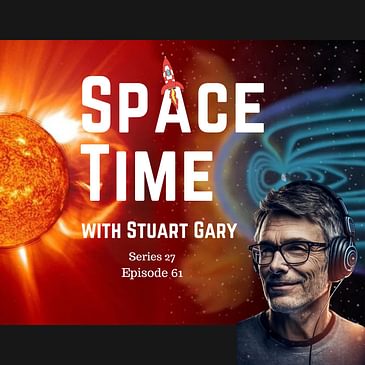We then delve into the mysteries of Earth's magnetotail, where NASA's Magnetospheric Multiscale mission has observed unusual substorms that could reshape our understanding of magnetic reconnection and its role in auroral phenomena.
Finally, we plunge into the depths of the sea with China's construction of the deep-sea neutrino telescope, TRIDENT, designed to scan the cosmos for neutrinos and unlock the secrets of cosmic rays and the extreme universe.
Join us on SpaceTime with Stuart Gary for an exploration of these awe-inspiring events and more, as we traverse the vastness of space and the wonders it holds.
(00:00) This is spacetime series 27, episode 61, for broadcast on 20 May 2024
(00:43) The sun has produced its biggest solar flare in nearly two decades
(10:28) NASA scientists have detected an unusual event in Earth's magnetotail
(21:35) The south pole neutrino detector uses liquid water rather than solid ice
(28:39) Supernova is basically a neutrino explosion that has this tiny optical signature
(33:00) New observations confirm that April 2024 was the hottest month on record
(35:43) A new study claims males with low testosterone may have an increased risk of dying prematurely
(37:03) Shroud of Turin supposedly shows Jesus after crucifixion
(42:25) Tim Mendham: crucifixion was fairly common in those days
Support the show and access ad-free episodes at https://www.spreaker.com/show/spacetime. Follow our cosmic conversations on Twitter @stuartgary, Instagram, YouTube, and Facebook. Join us as we unravel the mysteries of the universe, one episode at a time.
This episode is proudly supported by NordPass. Secure your digital journey across the cosmos with a password manager you can trust. Find your stellar security solution at https://www.bitesz.com/nordpass.
Listen to SpaceTime on your favorite podcast app and follow us on Twitter @stuartgary, Instagram, YouTube, and Facebook.
Become a supporter of this podcast: https://www.spreaker.com/podcast/spacetime-with-stuart-gary--2458531/support.





